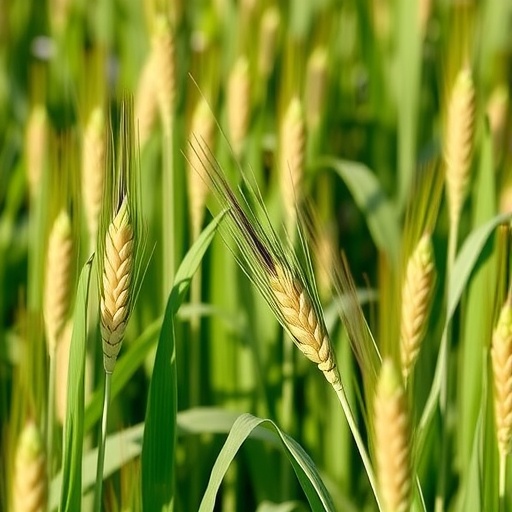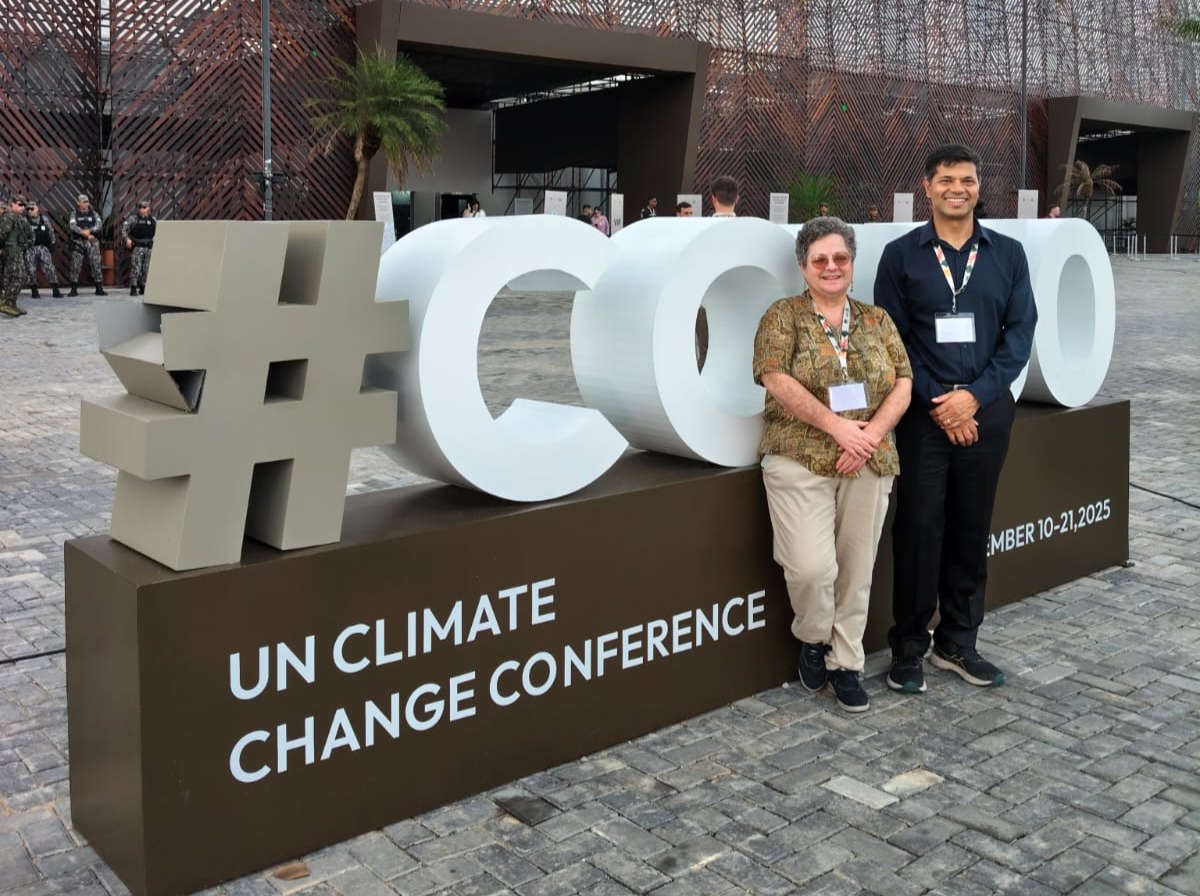On-Farm Trials Boost Grain Micronutrient Levels – Bioengineer.org

Report on a Novel Framework for On-Farm Agricultural Trials to Advance Sustainable Development Goals
Executive Summary
A study published in npj Sustainable Agriculture by Robert M. Lark and colleagues presents a refined framework for designing on-farm trials aimed at enhancing the micronutrient content of grain crops. This research directly addresses critical global challenges outlined in the Sustainable Development Goals (SDGs), particularly SDG 2 (Zero Hunger) and SDG 3 (Good Health and Well-being), by offering a scalable solution to combat “hidden hunger.” The methodological innovations focus on managing field variability, employing adaptive designs, and integrating technology, thereby promoting sustainable agricultural practices in line with SDG 12 (Responsible Consumption and Production) and SDG 15 (Life on Land). The framework’s emphasis on interdisciplinary collaboration also exemplifies SDG 17 (Partnerships for the Goals).
Introduction: Aligning Agricultural Innovation with Sustainable Development Goals
The imperative to achieve global food and nutritional security is a cornerstone of the 2030 Agenda for Sustainable Development. Micronutrient deficiencies affect billions of people, undermining public health and economic development. The research conducted by Lark et al. introduces a robust methodology for on-farm trials that seeks to increase the nutritional value of staple grain crops through biofortification. This work provides a scientifically rigorous and practical pathway to advance multiple SDGs by creating more resilient, nutrition-sensitive, and sustainable food systems.
Methodological Advancements in On-Farm Trial Design
The study’s primary contribution is a sophisticated trial design framework that overcomes the limitations of traditional agricultural research. Key innovations include:
- Management of In-Field Heterogeneity: The design confronts the inherent variability of on-farm environments, which has historically hindered the reproducibility of trial results.
- Focus on Biofortification: The trials systematically test interventions such as targeted fertilization, soil amendments, and crop varietal selection to boost levels of essential micronutrients like zinc, iron, and selenium.
- Emphasis on Practical Application: The methodology is designed to translate laboratory findings into effective, field-ready solutions for farmers.
Addressing Spatial Variability
A central element of the framework is its capacity to account for spatial variability within farm fields. Unlike controlled experimental stations, real-world farms exhibit significant heterogeneity. The methodology employs:
- Geostatistical Tools: To map and model variations in soil properties and micro-topography across a field.
- Advanced Sampling Strategies: To ensure that data collection accurately represents the entire trial area.
- Robust Statistical Analysis: To isolate the effects of experimental treatments from background environmental noise, thereby increasing the statistical power and reliability of the findings.
Adaptive and Iterative Framework
The research advocates for an adaptive trial design, a departure from static experimental models. This dynamic approach allows researchers to adjust protocols based on interim results, leading to more efficient and effective outcomes. This iterative process is crucial for accelerating the identification of optimal interventions while minimizing the use of resources, a key principle of sustainable production under SDG 12.
Integration of Advanced Technologies
The trial design is enhanced by the integration of modern technologies that support precision agriculture. The fusion of remote sensing data (e.g., satellite imagery) with on-the-ground field observations enables real-time monitoring of crop health and environmental conditions. This data-rich approach provides farmers with actionable insights for targeted interventions and strengthens the scientific rigor of the research.
Direct Contributions to Global Sustainability Targets
The implications of this research extend across several interconnected Sustainable Development Goals, providing a holistic approach to agricultural improvement.
SDG 2: Zero Hunger and Nutritional Security
The study directly targets SDG 2 by developing a scalable method to combat malnutrition. By enhancing the micronutrient content of staple grains—the primary food source for a significant portion of the global population—this work offers a potent strategy to address hidden hunger and improve nutritional outcomes on a global scale.
SDG 3: Good Health and Well-being
Micronutrient deficiencies are a major public health concern, leading to a range of adverse health outcomes. By improving the nutritional quality of food at its source, this research contributes directly to SDG 3, promoting better health and well-being for vulnerable populations worldwide.
SDG 12 & 15: Responsible Production and Environmental Stewardship
The framework promotes environmental sustainability, aligning with SDG 12 and SDG 15. By optimizing fertilization and soil management practices to enhance micronutrient uptake, the methodology helps reduce the excessive application of fertilizers. This, in turn, mitigates environmental pollution, reduces greenhouse gas emissions associated with fertilizer production, and promotes long-term soil health.
Collaborative Framework and Scalability
The success of the proposed framework hinges on collaboration and its potential for widespread adoption, reflecting the spirit of SDG 17.
SDG 17: Partnerships for the Goals
The research underscores the necessity of interdisciplinary and multi-stakeholder collaboration. The trial design integrates expertise from:
- Agronomists
- Soil Scientists
- Statisticians and Data Scientists
- Local Farmers
This participatory model ensures that solutions are not only scientifically sound but also socially acceptable and economically viable, fostering an inclusive innovation ecosystem as envisioned by SDG 17.
Socioeconomic Viability and Global Applicability
The researchers acknowledge that technological innovation must be paired with socioeconomic considerations. By incorporating farmer engagement and feedback loops, the framework enhances the likelihood of adoption. Furthermore, the adaptable nature of the trial design allows for customization to diverse agroecological zones, making it a globally relevant tool for agricultural research and development.
Conclusion and Future Outlook
The work of Lark and colleagues establishes a new standard for on-farm agricultural experimentation. By integrating rigorous statistical methods, advanced technology, and a collaborative ethos, their framework provides a clear blueprint for developing nutrition-sensitive and sustainable agricultural systems. This research is a significant step toward achieving a world free from hunger and malnutrition, demonstrating how targeted scientific innovation can drive progress across the Sustainable Development Goals. The methodology invites future research to build upon its principles, potentially incorporating machine learning and other emerging technologies to further enhance the precision and impact of agricultural interventions.
Reference Information
Article Title
Designing on-farm trials: an example with interventions to improve micronutrient status of grain crops.
Citation
Lark, R.M., Manzeke-Kangara, M.G., Kihara, J.M. et al. Designing on-farm trials: an example with interventions to improve micronutrient status of grain crops. npj Sustain. Agric. 3, 58 (2025). https://doi.org/10.1038/s44264-025-00101-0
Analysis of Sustainable Development Goals in the Article
-
Which SDGs are addressed or connected to the issues highlighted in the article?
The article addresses several interconnected Sustainable Development Goals (SDGs) by focusing on improving agricultural practices to enhance food nutrition and sustainability.
- SDG 2: Zero Hunger: This is the most central SDG. The article’s primary focus is on “addressing nutritional deficits” and mitigating “micronutrient deficiencies, often dubbed ‘hidden hunger,'” through the biofortification of staple grain crops. It directly contributes to achieving food security and improved nutrition.
- SDG 3: Good Health and Well-being: The article explicitly states that the research has “profound” implications from a “public health perspective.” By enhancing the nutritional quality of staple foods, the study presents a scalable approach to combat malnutrition, which is a fundamental component of global health.
- SDG 12: Responsible Consumption and Production: The research promotes sustainable agricultural practices. The adaptive trial design “minimizes resource wastage,” and the optimization of fertilization “reduces excessive fertilizer application,” aligning with the goal of achieving sustainable management and efficient use of natural resources.
- SDG 15: Life on Land: The study reinforces environmental sustainability by promoting practices that improve soil health. The article notes that optimizing fertilization interventions helps in “mitigating environmental pollution and promoting soil health,” which is crucial for protecting terrestrial ecosystems.
- SDG 17: Partnerships for the Goals: The article underscores the “necessity of interdisciplinary collaboration” involving agronomists, soil scientists, statisticians, and farmers. It also highlights “participatory approaches and feedback loops” with farmers, which exemplifies the multi-stakeholder partnerships needed to achieve sustainable development.
-
What specific targets under those SDGs can be identified based on the article’s content?
Based on the article’s discussion of improving nutrition, agricultural sustainability, and collaboration, the following specific targets can be identified:
- Target 2.1: End hunger and ensure access by all people, in particular the poor and people in vulnerable situations, including infants, to safe, nutritious and sufficient food all year round. The research directly addresses this by aiming to enrich the “micronutrient profile of grain crops” like zinc, iron, and selenium, which are staple foods for billions.
- Target 2.2: End all forms of malnutrition. The study’s core objective is to find a “scalable approach to mitigate malnutrition on a global scale” by tackling “hidden hunger” (micronutrient deficiencies) through biofortification.
- Target 2.4: Ensure sustainable food production systems and implement resilient agricultural practices. The article describes a framework for “sustainable agricultural practices” that are adaptable to “diverse agroecological zones” and promote “soil health,” thereby building resilience.
- Target 12.2: Achieve the sustainable management and efficient use of natural resources. The article’s focus on an “adaptive trial design” that “minimizes resource wastage” and optimizes interventions to reduce “excessive fertilizer application” directly relates to this target.
- Target 15.3: Combat desertification, restore degraded land and soil. By promoting practices that lead to “mitigating environmental pollution and promoting soil health,” the research contributes to the restoration and health of agricultural land.
- Target 17.16: Enhance the global partnership for sustainable development, complemented by multi-stakeholder partnerships. The article highlights the project’s success as a result of “interdisciplinary collaboration” between scientists, statisticians, and data scientists.
- Target 17.17: Encourage and promote effective public, public-private and civil society partnerships. The study’s use of “participatory approaches and feedback loops” that ensure “farmer engagement” is a clear example of building effective partnerships with local stakeholders.
-
Are there any indicators mentioned or implied in the article that can be used to measure progress towards the identified targets?
The article does not mention official SDG indicators, but it implies several metrics that can be used to measure progress towards the identified targets:
- Micronutrient levels in grain: The most direct indicator is the measured “micronutrient content of crops,” specifically the levels of “zinc, iron, and selenium within the grain.” This measures progress towards Targets 2.1 and 2.2.
- Agricultural productivity: The article mentions that the advancement could “redefine global agricultural productivity.” Measuring yield and nutritional output per unit of land or input would be a key indicator for Target 2.4.
- Efficiency of resource use: The reduction in “resource wastage” and “excessive fertilizer application” are implied indicators for Target 12.2. This could be measured by tracking the amount of fertilizer used per unit of output.
- Soil health metrics: The goal of “promoting soil health” implies the use of indicators such as soil organic matter content, nutrient levels, and texture, which are relevant to Target 15.3.
- Level of stakeholder collaboration: The success of the “interdisciplinary collaboration” and “farmer engagement” can be seen as a process indicator for Targets 17.16 and 17.17. This could be measured by the number and diversity of partners involved and the degree of farmer participation in trial design.
-
Create a table with three columns titled ‘SDGs, Targets and Indicators” to present the findings from analyzing the article.
SDGs Targets Indicators (Implied from the article) SDG 2: Zero Hunger 2.1 End hunger and ensure access to nutritious food.
2.2 End all forms of malnutrition.
2.4 Ensure sustainable and resilient food production.– Micronutrient content (zinc, iron, selenium) in grain crops.
– Prevalence of micronutrient deficiencies (“hidden hunger”).
– Agricultural productivity and yield.SDG 3: Good Health and Well-being 3.4 Reduce premature mortality from non-communicable diseases and promote well-being. – Reduction in rates of malnutrition-related health issues. SDG 12: Responsible Consumption and Production 12.2 Achieve sustainable management and efficient use of natural resources. – Rate of fertilizer application.
– Measurement of resource wastage in agricultural trials.SDG 15: Life on Land 15.3 Combat desertification and restore degraded land and soil. – Metrics of soil health.
– Levels of environmental pollution from fertilizer runoff.SDG 17: Partnerships for the Goals 17.16 Enhance multi-stakeholder partnerships.
17.17 Encourage effective public and civil society partnerships.– Number and diversity of disciplines in research collaboration.
– Level of farmer engagement and participation in trials.
Source: bioengineer.org
What is Your Reaction?
 Like
0
Like
0
 Dislike
0
Dislike
0
 Love
0
Love
0
 Funny
0
Funny
0
 Angry
0
Angry
0
 Sad
0
Sad
0
 Wow
0
Wow
0



















































.jpg.webp?itok=0ZsAnae9#)

























